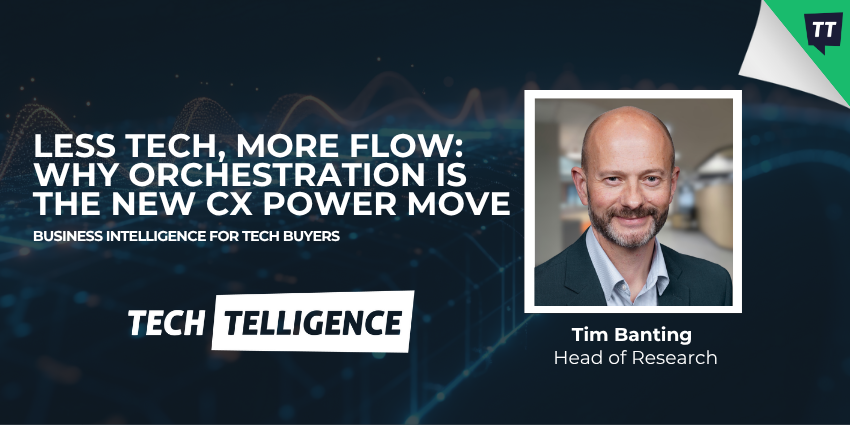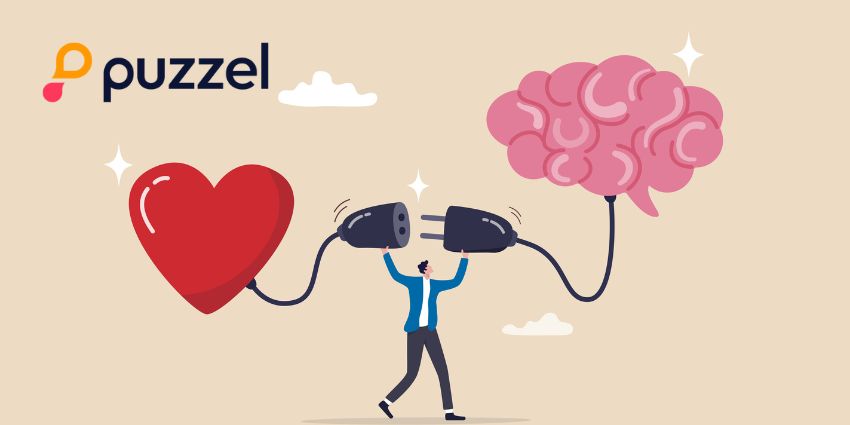When considering digital experience platform (DXP) providers, Adobe and Optimizely are likely the first names that spring to mind.
Indeed, most industry evaluations – including the latest DXP Magic Quadrant from Gartner – present both vendors as market leaders.
Market analysts also commend the depth of their DXP solutions, which are packed with features to design, orchestrate, and optimize digital customer experiences.
However, there are some crucial differences.
Most consider Optimizely One is easier to use, but the Adobe Experience Cloud is more scalable and benefits from a massive partner network.
Meanwhile, Adobe exhibits a rapid, innovative feature release cadence, while Optimizely concentrates mostly on modularity and simple, scalable pricing.
Yet, that’s a high-level overview. Here’s a closer look to help organizations make the right choice.
Key Considerations When Choosing a DXP Platform
Many market analysts, including Forrester, IDC, and – of course – Gartner, release studies to support enterprises in procuring the best-placed DXP solution.
However, before referencing these resources, brands must visualize what their ideal digital customer experiences look like. That will help isolate the ideal DXP.
Buyers should also look beyond market reports and consider shortlisted solutions based on their:
- Existing Technology Stacks: Which platform aligns best with existing technology, such as CRM solutions, content marketing tools, etc.? Think about the integration requirements here and the opportunity for vendor consolidation.
- Use Cases: How will teams use the DXP to enhance marketing, content management, or sales processes? What kind of features will be most important to those users?
- Purpose: What’s the reason for introducing a DXP in the first place? Will it extend content marketing activities, centralize broader CX initiatives, or become a central hub for orchestrating experiences?
- Composability: DXP buyers are shifting towards composable, over monolithic platforms. So, consider: how easy is it to customize and adjust the system?
- Ease of Use: How much training will teams need to use the platform? How easy is it to install, configure, and align with existing tools?
- Scalability & Future Requirements: How effectively will the system adapt to long-term needs? Does the vendor offer advanced solutions for AI, automation, and upgrades?
Other factors like pricing, support services, and analytics may also come into play, alongside the provider’s record and strategy for security and compliance.
Adobe vs. Optimizely: What Do Analysts and Verified Customers Think?
Both Adobe and Optimizely are neck and neck in terms of rankings across industry reports and verified customer review sites.
In the 2024 Magic Quadrant, Adobe held the top spot by a large margin.
However, Optimizely ranks slightly ahead of Adobe in the 2025 edition, with the analyst citing its rapid growth.
Both companies remain leaders, however.
Adobe ranks high on innovation, brand awareness, and partner support, but falls behind in terms of its complexity and pricing.
Optimizely receives commendation for its platform breadth, modularity, and affordable pricing, but has a slightly skewed focus on marketing and less experience in the SaaS space.
The company slightly outperforms Adobe on Gartner Peer Insights, the verified customer review site (as of May 2025).
Indeed, Optimizely One records an overall rating of 4.5 out of five stars, compared to 4.4 for the Adobe Experience Cloud.
On G2, Optimizely again ranks marginally higher, with a 4.2 out of five stars, higher than Adobe’s 4.1 score.
Adobe vs. Optimizely: A Comparison of Key Features
Both companies offer complete DXP suites, with solutions for journey creation, assembly, and management. They also offer a degree of composability, allowing API-first DXP approaches.
However, there are several differences. For instance, Adobe offers a more comprehensive analytics suite while Optimizely has a greater breadth of native features for marketing teams.
That’s just two examples of many. Let’s take a deeper dive.
Content Management and Creation
Adobe’s Experience Manager solution comes with sophisticated WYSIWYG (what you see is what you get) authoring, content modeling, and robust asset management.
Users frequently note the advanced creative and branding features, thanks to Adobe’s heritage in design tools.
However, the portfolio’s complexity can pose challenges for non-technical teams.
Adobe’s focus on creative workflows and integrated design resources makes it an appealing choice for enterprises already immersed in Adobe Creative Cloud.
Optimizely’s CMS capabilities, bundled within Optimizely One, emphasize simplicity, alignment, and intuitive design.
Additionally, its user interface allows marketing teams to move seamlessly between tasks, with embedded AI for content ideation, editing, and layout.
Although slightly younger as a SaaS solution, it supports flexible deployment types (SaaS or hybrid SaaS/PaaS) and encourages composability.
Many reviewers highlight its drag-and-drop environment, real-time previews, and personalization that is highly accessible for marketers.
Personalization and AI
Adobe Target, combined with a Real-Time CDP and advanced analytics, drives Adobe’s personalization features.
The platform leverages AI to surface predictive insights for content, e-commerce placements, and targeted messaging.
Also, many companies appreciate Adobe’s “non-destructive” approach to AI, which enables access to intelligent features while protecting brand guidelines.
Organizations can also experiment with agentic and generative AI tools from the Adobe Experience Platform.
Its Agent Orchestrator to build, manage, and – of course – orchestrate AI agents for DXP use cases is an excellent example.
However, implementing these agents – and broader AI use cases – may require technical expertise.
Optimizely focuses heavily on personalization and experimentation. Its system embeds AI throughout, with tools for content recommendation, traffic allocation, and advanced audience segmentation.
Optimizely Opal can even dynamically adjust web pages based on real-time behaviors and the visitor’s profile.
The provider also offers an approachable no-code interface, facilitating advanced audience segmentation. Plus, the modular capabilities allow companies to easily embed their own AI tools into the system.
Analytics and Customer Data Management
Adobe excels in this category with its real-time Customer Data Platform (CDP), Customer Journey analytics, data visualization tools, and more.
Companies can also draw data from various connected platforms and combine everything into a single interface for end-to-end insights.
The data collection capabilities even allow users to standardize data from client-side sources.
Meanwhile, Optimizely also offers robust capabilities to unify data, with the Optimizely Graph for connecting data sources, and a dedicated content platform.
The platform uses AI to analyze performance, deliver content intelligence, and proactively share recommendations with marketing teams.
Moreover, Optimizely offers real-time segmentation and experimentation dashboards, alongside intelligent solutions for data routing and storage.
However, some users on Gartner Peer Insights have noted that the Graph can be complicated to use.
Ecosystem and Integrations
Adobe stands out for an extensive partner network, where companies can access design agencies, large systems integrators (SIs), and consultancies.
The ecosystem has a global footprint, with robust training programs to assist teams in building, extending, and customizing solutions.
Adobe’s Experience Platform also provides custom integrations with adjacent technologies so companies can integrate it tightly within their existing stack.
Those integrations span Microsoft, Google, IBM, Salesforce, AWS, and numerous others.
Meanwhile, Optimizely’s composable approach has proven central to its rapid growth, allowing brands to quickly swap native features for third-party alternatives.
Optimizely also integrates with virtually all the same solutions as Adobe, but the company doesn’t have the most comprehensive partner network yet.
Overall User Experience
For companies in search of highly sophisticated features, Adobe is a powerful choice.
Although it ranks higher than Optimizely for things like ease of deployment, end-user training, and scalability on Gartner Peer Insights, much of this is likely down to the extensive partner network.
Indeed, analysts and verified customers have noted that Adobe’s product portfolio is complicated, which can lead to a poor experience for nontechnical users.
The learning curve for many features is steep, and success often depends heavily on finding the right partner, which could mean that companies spend more than intended on their system.
Optimizely ranks slightly higher than Adobe on Peer Insights for overall ease of deployment and integration.
Moreover, many consider it the simpler platform, thanks to its highly composable nature and no-code tools.
However, it does fall behind Adobe in terms of overall scalability.
Plus, not all features are as straightforward as they seem. For instance, bridging the gaps between certain modules, like the Optimizely Graph, can be complicated.
How Do Adobe and Optimizely Compare on Price?
Both companies offer a quote-based pricing structure, with no clear “plans” listed on their websites.
However, according to verified reviews, Optimizely breaks its quotes into modules, enabling more transparent pricing.
Meanwhile, it doesn’t cap usage for particular products, reducing unexpected costs as usage increases.
In its Magic Quadrant, Gartner commended Optimizely for its pricing, which lowers the barrier to entry and ensures companies only pay for the services and features they need.
Adobe’s pricing is a pain point for a lot of customers. The organization recently launched a “unified pricing metric”, but it’s only available to certain customers.
Most companies need to invest in the entire Experience Cloud suite for full functionality, which makes Adobe one of the more expensive options, particularly for companies that only need specific features.
Plus, the technical complexity of implementing Adobe means that most companies need to pay extra for partner support with things like deployment, maintenance, and configuration.
Adobe vs. Optimizely: The Verdict
So, which platform wins? Ultimately, it all comes down to the needs of the specific company.
The Adobe Experience Cloud stands out for its sophisticated and scalable portfolio, wide partner network, and AI leadership.
Indeed, the company is constantly innovating and expanding, introducing new solutions to support businesses from various backgrounds.
However, the high pricing and complexity might deter some beginners from using this system, particularly if they have a limited support budget.
Optimizely One is easier to use, designed with a focus on modularity, and ideal for blending content management, personalization, AI, and testing in one place.
The simpler pricing structure will appeal to most smaller and mid-sized brands, but some companies might find the system lacks scale and has hidden complexities.







